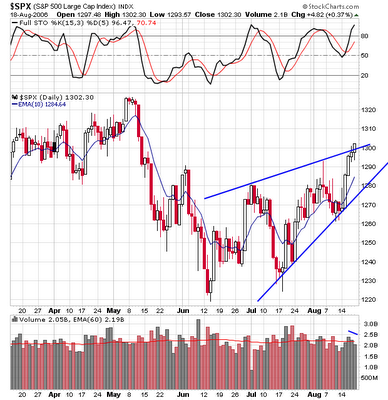“I realized that every time I had a loss, I needed to learn something from the experience and view the loss as tuition at the College of Trading. As long as you learn something from a loss, it’s not really a loss.”
-Tom Basso, “The New Market Wizards”
The Basso quote above is one of my favorite trading-related quotes. (I strongly recommend both of the original “Market Wizards” books.) In this business you must look at losses as tuition in order to succeed. If you beat yourself up to much about losing money you will be too afraid to pull the trigger and miss opportunities. On the other hand, if you ignore your mistakes and pretend you never made them, you’ll never learn anything. Mistakes, perversely, are the key to success – probably in most endeavors that are worth pursuing, imho.
Last August I wrote a piece called, “The Technical Case for Caution.” In it, I argued that the market rebound from the summer lows was poised to reverse. I couldn’t have been more wrong. We later took out the May highs and ran onwards and upwards without a single meaningful correction until this past February.
The first mistake I made then was to assign the ascending wedge pattern to the prevailing market action. Below is the chart I presented in that piece:


I can’t find fault with the other points in the piece but this, too, is important. Even though the rest of my analysis may have been valid, the market doesn’t always do what it “should.” My main takeaway from reviewing this mistake is that, no matter what we might believe fundamentally, we must always respect the price action.
LIV